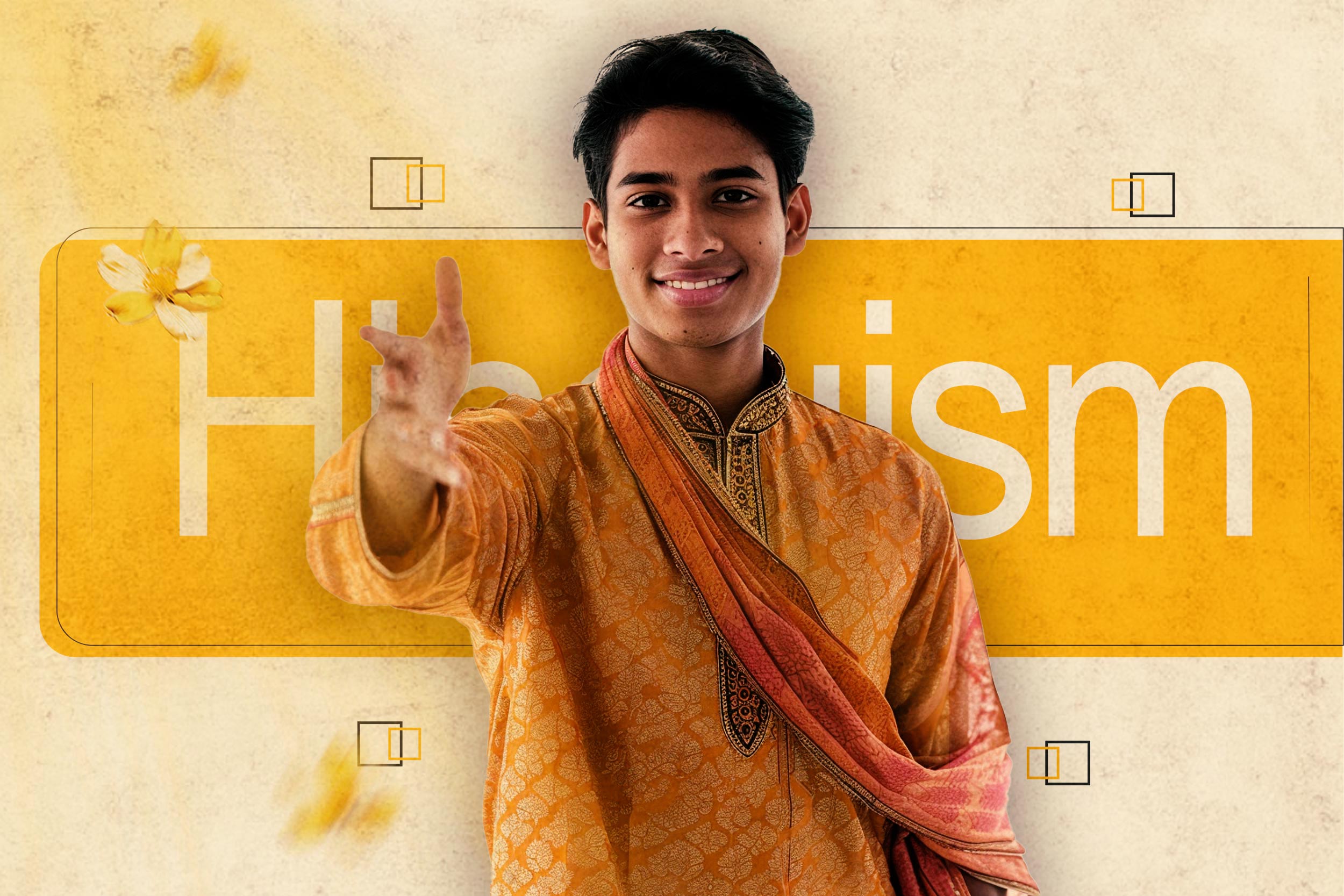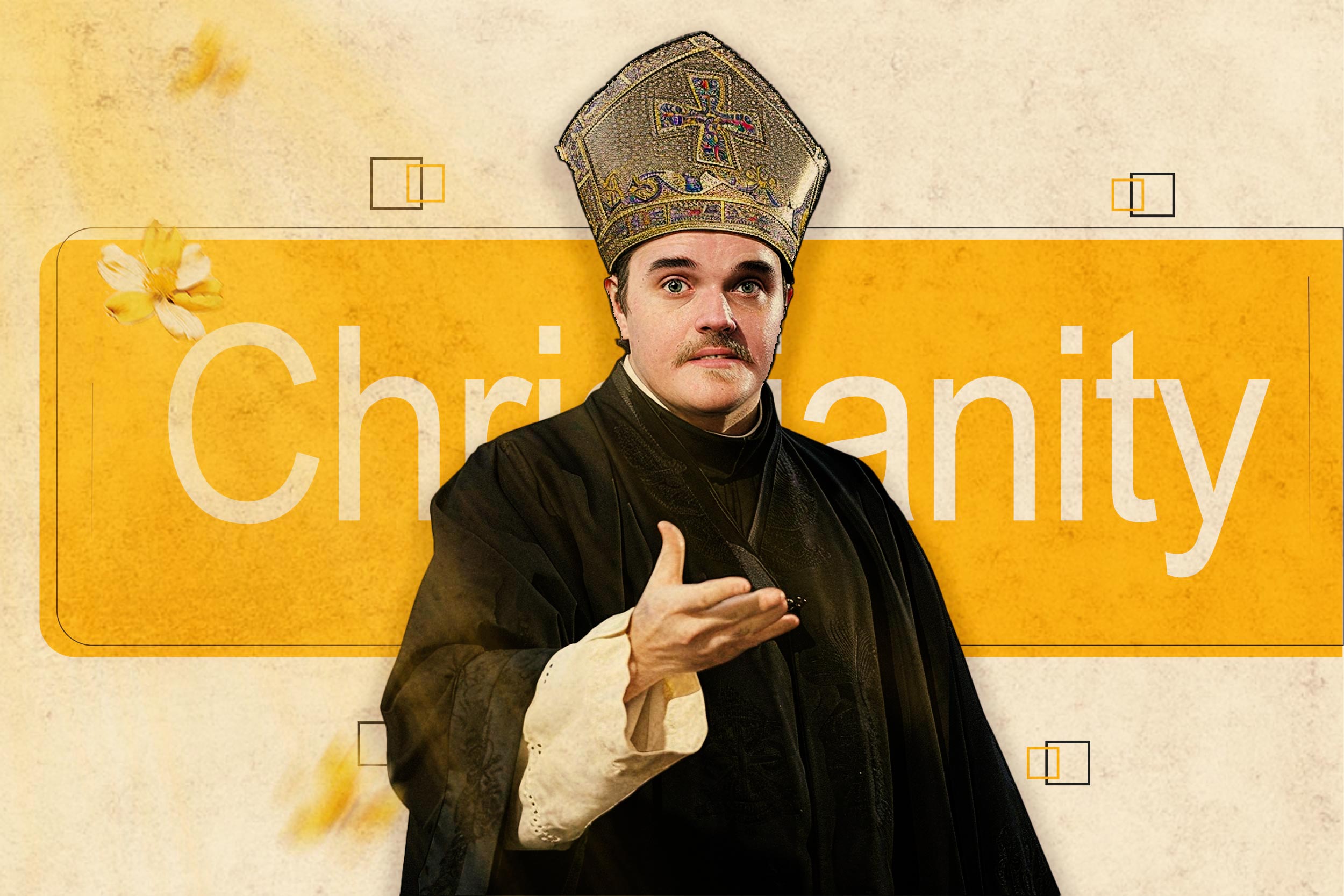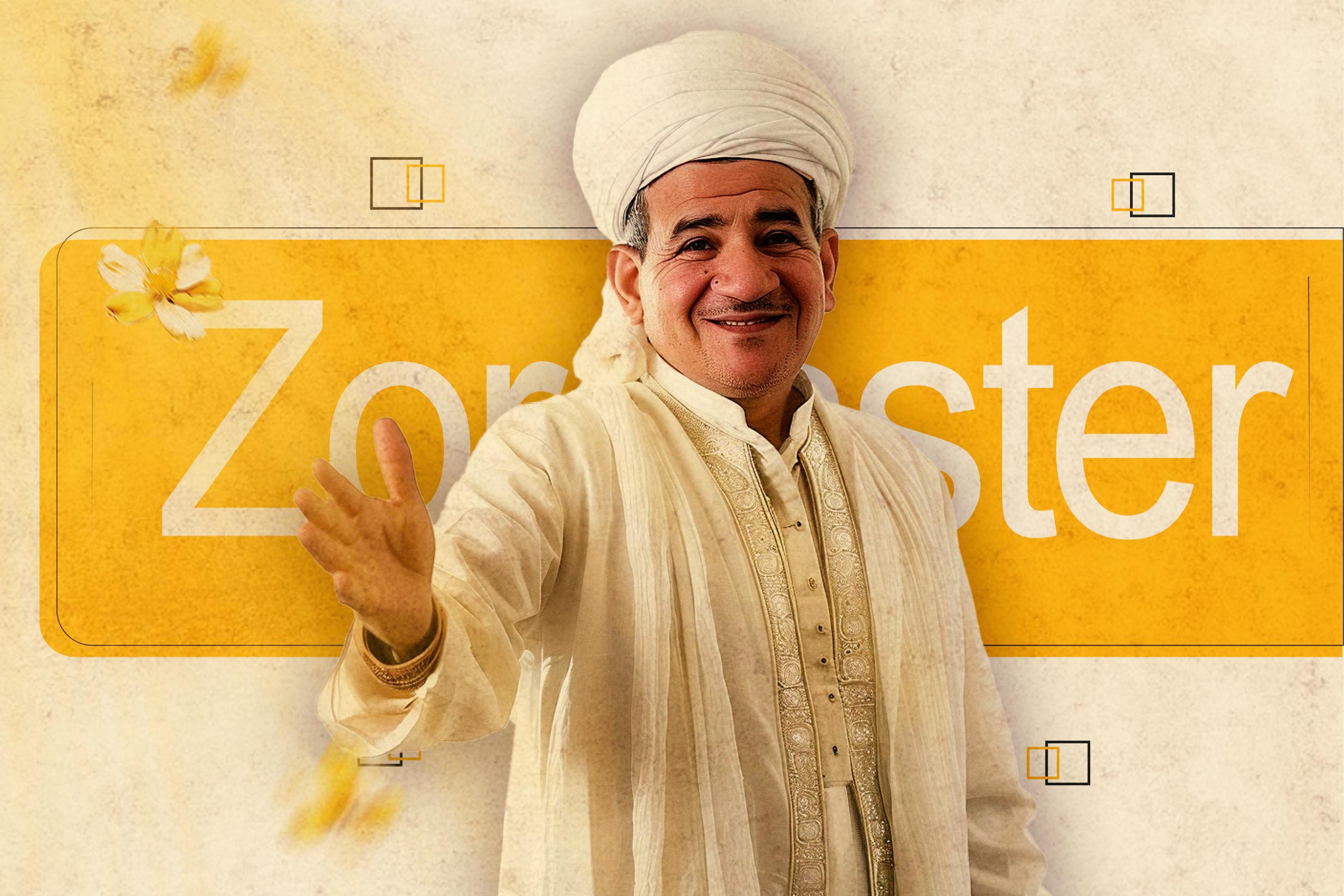What Are the Characteristics of the Savior of Hinduism, and What Does the Belief of Hindus in the Savior Mean?
Hinduism is an ancient and fascinating religion, and at the same time, filled with various interpretations, sects, and customs, to the extent that at times conflicting beliefs coexist within this religion. In Hinduism, the ultimate existence from which everything originates is known as Aum (or Om). The three main Hindu deities – Brahma, Vishnu, and Shiva – have been created from this supreme being.
One of the most interesting beliefs in Hinduism is the concept of material and physical incarnations of gods, known as avatar. The god Vishnu has had the most avatars, among which are fish, turtle, boar, Narasimha (man-lion), Vamana (dwarf), which are general manifestations, and Parashurama, Rama, Krishna, Buddha, and Kalki, which are his specific avatars with distinct human characteristics that appeared at specific times and places. The last of these, namely Kalki or Kalkin, is the savior of Hinduism, who will come riding a white horse and will destroy darkness, evil, and falsehood.[1]
In essence, the savior of Hinduism can be considered as a personal and specified figure, since Kalki, the final incarnation of Vishnu, is a person with a specific name, lineage, and even birthplace. All his characteristics are recorded in Hindu scriptures. Although he has certain human characteristics, since he is believed to be a manifestation of Vishnu or even Vishnu himself, he is a divine being.
The savior of Hinduism will appear in the Kali Yuga, the final age, where one of its characteristics is the disappearance of truth and righteousness: “Anyone wherever will be destroyed by Kalki. They are irreligious, wicked, hypocrite, fraudulent oppressor. Hundreds of thousands of armed Brahmins will be with him. A whole army of charioteers, horse riders, and elephant riders will follow him.”[2]
“Lord Kalki, the Lord of the universe, will mount His swift white horse Devadatta and, sword in hand, travel over the earth exhibiting His eight mystic opulences and eight special qualities of Godhead. Displaying His unequaled effulgence and riding with great speed, He will kill the millions those thieves who have dared dress as kings.”[3]
If we want to better understand the savior of Hinduism, we must first become somewhat familiar with the Hindu worldview.
The Hindu Worldview
Hinduism, with over four thousand years of history, is the third largest religion in the world after Christianity and Islam. Its followers are mostly concentrated in India and South Asia. This religion is based on the animism of all natural elements. Hinduism does not have a specific founder, creed, or book and is full of various small indigenous sects, but its main branches are Vishnu, Shiva, and Shakta sects.
In order to understand the worldview of Hinduism, besides knowing the gods related to this religion, we should also become familiar with concepts such as Maya, Narayana, Atman, Ajnana, Moksha, and Dharma.
According to Hinduism, the world is the shadow or illusion of the creator God known as Brahman, and this concept is called “Maya.” Maya is the manifestation of Brahman in the world.[4] According to Hindu thought, humans are beings part of the Divine, and this concept is referred to as “Narayana.” In the Hindu religion, humans are considered to be supreme beings in the universe, having a godlike existence. Humans are even sometimes considered equal to Brahman in some sects of this religion. The reason for this godliness is the divine spirit or spark that is deposited in humans, and as a result transforming them into divine beings. Hindus call this immortal soul “Atman” and believe that even death cannot harm it; it is not born; it does not die; it is not penetrated by weapons, water, fire, and wind, and remains constant, stable, and unchanging.[5] This interpretation is very close to Islam’s interpretation of the human soul and spirit.
Atman, which is immortal and possesses special attributes, is obscured by Ajnana or Avidya, which means spiritual ignorance. Ajnana is conceptually equivalent to the original sin in Christianity, and it is like a veil that prevents people from seeing Atman clearly. Ajnana represents human attachment to material pleasures and worldly matters. This attachment causes the immortal soul to become trapped in the cycle of rebirth and reincarnation, unable to realize its true divine nature. However, unlike original sin in Christianity, Ajnana is seen as finite and something that can be overcome. When a person is able to transcend Ajnana, they can attain “Moksha” – the ultimate state of liberation, freedom, and salvation.[6]
Moksha, which represents the ultimate state of liberation and freedom from the cycle of rebirth and reincarnation, is a blissful destiny that every individual should strive to attain. Reaching Moksha elevates one to a pure spiritual state, freeing the person from the constraints and attachments of material life. In fact, someone who has achieved Moksha has been able to fully express his divine spiritual existence by renouncing material pleasures.[7]
Atman, or the immortal soul, of a person who attains Moksha becomes akin to the Divine itself, allowing them to achieve profound closeness with the supreme Godhead. This state of spiritual unity with the divine can even occur before physical death for those who have detached themselves from material desires and concerns.
It is this belief in the potential for the human Atman to transcend its mortal limitations and achieve oneness with the Divine that underpins the ascetic practices of Hindu devotees. They are seen as seekers of liberation from the state of Ajnana or Avidya– the ignorance and attachment to the material world- in order to ultimately reach the exalted state of Moksha.
Reaching Moksha is reaching the origin and finding the essence of one’s existence which every human has always had but only lost behind carnal attachments and desires. Thus, reaching Moksha is a form of self-knowledge.[8] According to Hindu beliefs, this knowledge is attained through the three paths of yoga: Jnana, Bhakti, Karma, or knowledge, loving devotion to a personal god, and action.[9] Although various Hindu scriptures and teachings have introduced different approaches to achieve this goal, this core advice can be considered the most important in attaining this blissful destiny.
According to what we have stated, the most important duty of every Hindu is to attain self-knowledge and strive to break free from the cycle of rebirth. This task involves establishing “dharma,” meaning the religious and moral law governing individual conduct.[10] The establishment and upholding of dharma is one of the most crucial responsibilities of the savior of Hinduism. When Kalki comes, dharma will be fully established, and this means people will easily find bliss. The savior of Hinduism will establish dharma by uprooting oppression and corruption, destroying criminals, and establishing justice and security.[11]
The Savior of Hinduism, the Rescuer from the Suffering of Rebirth
The worldview and ontological perspectives we discussed regarding Hinduism align with the commonalities shared across various Hindu sects. Notably, these beliefs exhibit a strong similarity and closeness to the shared worldviews and fundamental tenets of divine religions. This points to the fact that human needs are innate and all religions originate from a common source. Hinduism can be likened to a river that has become muddied over time, having separated from this shared wellspring and intermixed with many false beliefs and superstitions, in such a way that it is not easy to recognize its true essence or origin; however, one can still observe the traces of human innate needs and rational responses to these needs in this faith.
The human yearning for a bright individual and collective future is a natural and universal need, and the Hindu faith provides responses to this timeless question through a vast corpus of its sacred scriptures. In books such as the Upanishads, Rigveda, Al-Biruni’s India, Bhagavad Gita, the writings of Shankaracharya, Vallabha, and Shakyamuni, there are numerous references to the prophesied coming of a Hindu savior figure. These texts also describe the state of the world before and after the arrival of this messianic redeemer, as well as the personal qualities and characteristics attributed to this divine savior.
The Savior of Hinduism appears to establish the first world order which used to rule the world. After his coming, the world will return to its original order, and the social hierarchy will be established according to the beliefs of Hindus. However, his arrival is accompanied by great events in the whole world that will mark the end of oppression, injustice, darkness, and falsehood:
“Kalki … will appear, riding his white horse and wielding a shiny sword, at the end of the Kali Yuga, the dark age through which we are passing. This is considered to be the age of suffering, darkness, and doom. His task will be to end the evil and restore dharma. Thus will begin a new cycle, again will start the Satya Yuga or the age of truth and righteousness.”
These will all be contemporary monarchs, reigning over the earth; kings of churlish spirit, violent temper, and ever addicted to falsehood and wickedness. They will inflict death on women, children, and cows; they will seize upon the property of their subjects; they will be of limited power, and will for the most part rapidly rise and fall; their lives will be short, their desires insatiable, and they will display but little piety. Wealth and piety will decrease day by day, until the world will be wholly depraved. Then property alone will confer rank; wealth will be the only source of devotion; passion will be the sole bond of union between the sexes; falsehood will be the only means of success in litigation; and women will be objects merely of sensual gratification…until the human race approaches its annihilation.
By his irresistible might, he will destroy all the Mlechchas and thieves, and all whose minds are devoted to iniquity. He will then re-establish righteousness upon earth; and the minds of those who live at the end of the Kali age shall be awakened, and shall be as pellucid as crystal.[12]
“After the Supreme Lord Kalki, the Lord and Master of Dharma, has incarnated, Satya Yuga will begin, and progeny will be created in the mode of goodness.”[13]
Based on what we discussed, we can conclude that the anticipated savior of Hinduism is expected to appear in our current millennium, with the mission of rescuing the earth from darkness and chaos. This belief in a future redeemer is a forward-looking tenet that instills hope for a brighter future among Hindus.
The arrival of this prophesied savior is believed to usher in an era filled with justice, righteousness, and the full actualization of human divine potential. His coming will elevate humanity, allowing people to realize their innate spiritual capacities, find liberation from suffering, and ultimately attain eternal bliss.
[1]. Roshen Dalal. Hinduism: An Alphabetical Guide. Penguin Books, 2010.
[2]. Bhagavata Purana
[3]. Srimad-Bhagavatam 12.2.19-20
[4]. Esther Abraham Solomon. Avidyā: A Problem of Truth and Reality. Gujarat University1969, pp. 269-270.
[5] The Gita
[6]. John Bowker. The Oxford Dictionary of World Religions. Oxford University Press, 1997, p. 650.
[7]. Arvind Sharma. Classical Hindu Thought: An Introduction. Oxford University Press, 2000, p.113.
[8]. Jorge Ferrer. “Transpersonal knowledge,” in Transpersonal Knowing: Exploring the Horizon of Consciousness (editors: Hart et al.). State University of New York Press, 2000, Chapter 10.
[9]. John Lochtefeld. The Illustrated Encyclopedia of Hinduism. New York: Rosen Publishing, 2014, pp. 98–100, also see articles on bhaktimārga and jnanamārga.
[10]. Albrecht Wezler, “Dharma in the Veda and the Dharmaśāstras,” Journal of Indian Philosophy, December 2004, Volume 32, Issue 5–6, pp. 629–654.
[11]. Alf Hiltebeitel. Dharma: Its Early History in Law, Religion, and Narrative. Oxford University Press, 2011, pp. 288–292.
[12]. The Vishnu Purana, book IV, chapter XXIV
[13]. यदावतीर्णो भगवान् कल्किर्धर्मपतिर्हरि: कृतं भविष्यति तदा प्रजासूतिश्च सात्त्विकी (Śrīmad-Bhāgavatam, Canto 12, chapter 2).
































































